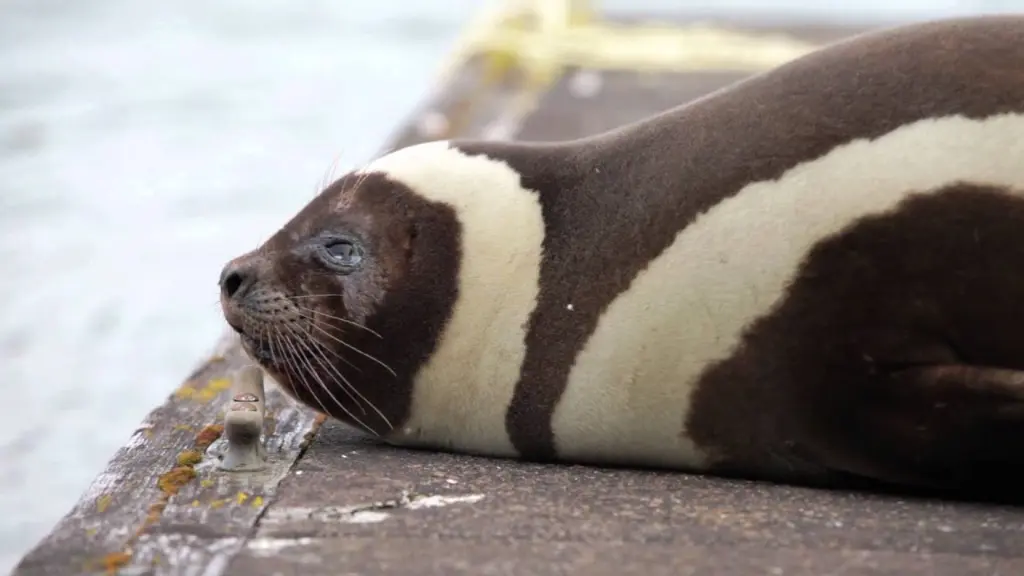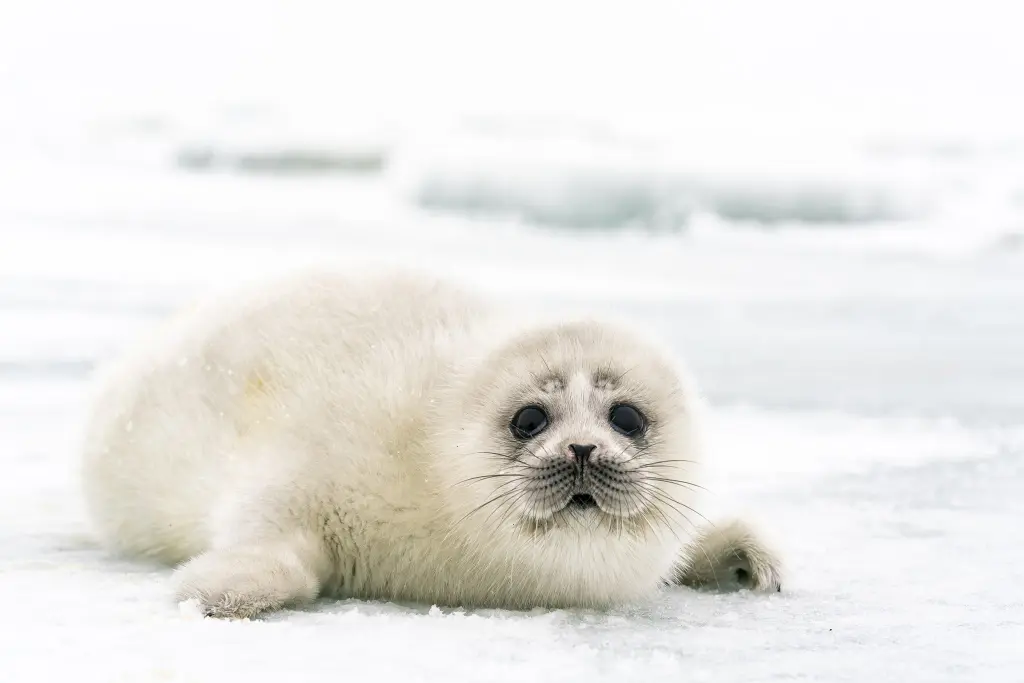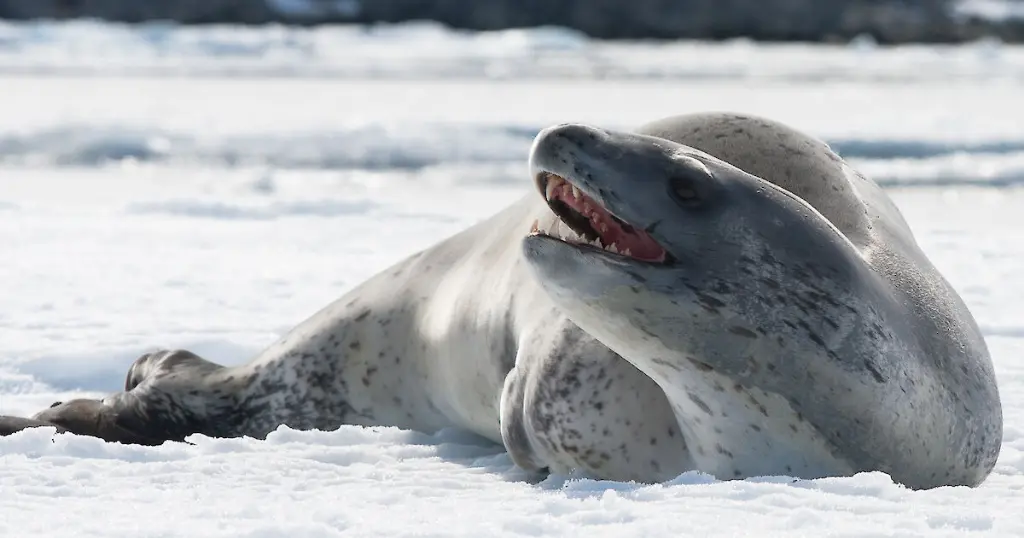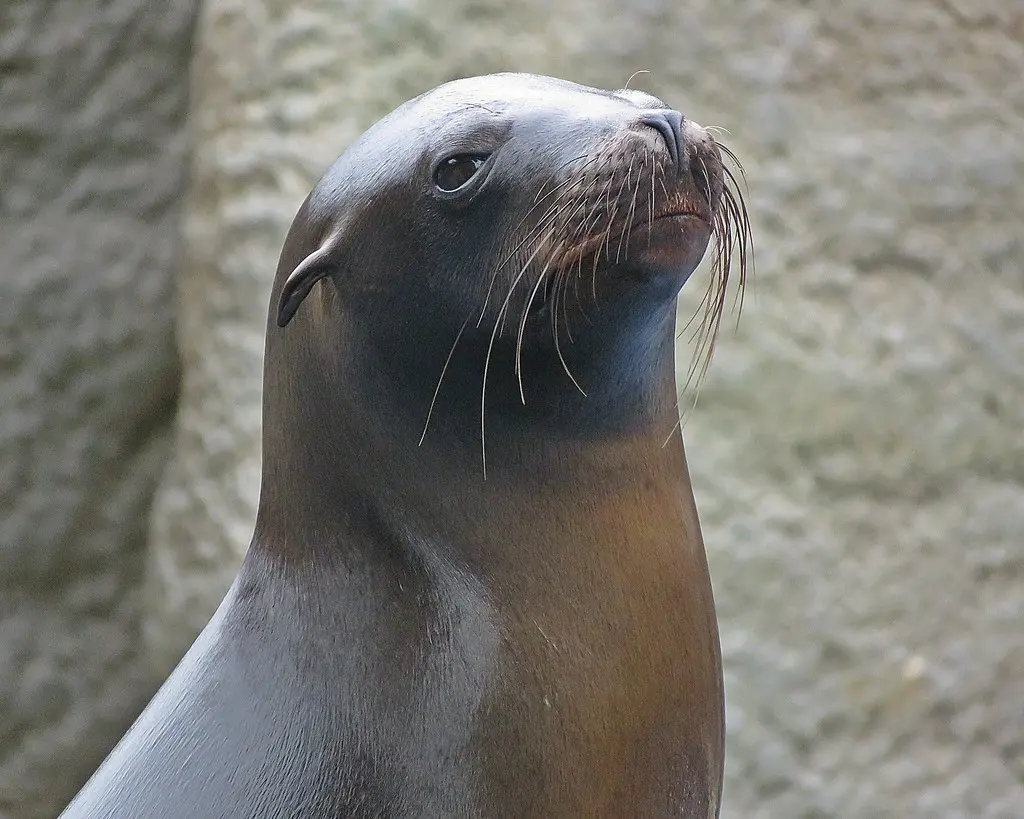Have you ever seen a picture of a walrus? These amazing animals are truly unique, with their enormous size, distinctive tusks, and charming whiskers. In this article, we’ll explore the world of the walrus, scientifically known as Odobenus rosmarus, and discover some fascinating facts about these incredible creatures of the Arctic.
What is a Walrus? Understanding the Basics
The walrus is a large marine mammal that lives in the Arctic regions of the world. They are pinnipeds, a group that also includes seals and sea lions. Walruses are known for their prominent tusks, their thick blubber layer that keeps them warm in freezing waters, and their numerous sensitive whiskers.
Where Do Walruses Live? Arctic Habitats
Walruses are found primarily in the Arctic Ocean and its surrounding seas. This includes regions of Russia, Canada, Greenland, and the United States (Alaska). They prefer shallow coastal waters where they can easily access their food sources on the seabed. They also spend time on ice floes, using them as resting platforms and breeding grounds. The Arctic environment is crucial to their survival.
Two Subspecies of Walrus
There are generally recognized to be two subspecies of walrus:
- Atlantic Walrus (Odobenus rosmarus rosmarus): Found in the Atlantic Ocean, primarily around Canada and Greenland.
- Pacific Walrus (Odobenus rosmarus divergens): Found in the Pacific Ocean, primarily in the Bering and Chukchi Seas near Alaska and Russia.
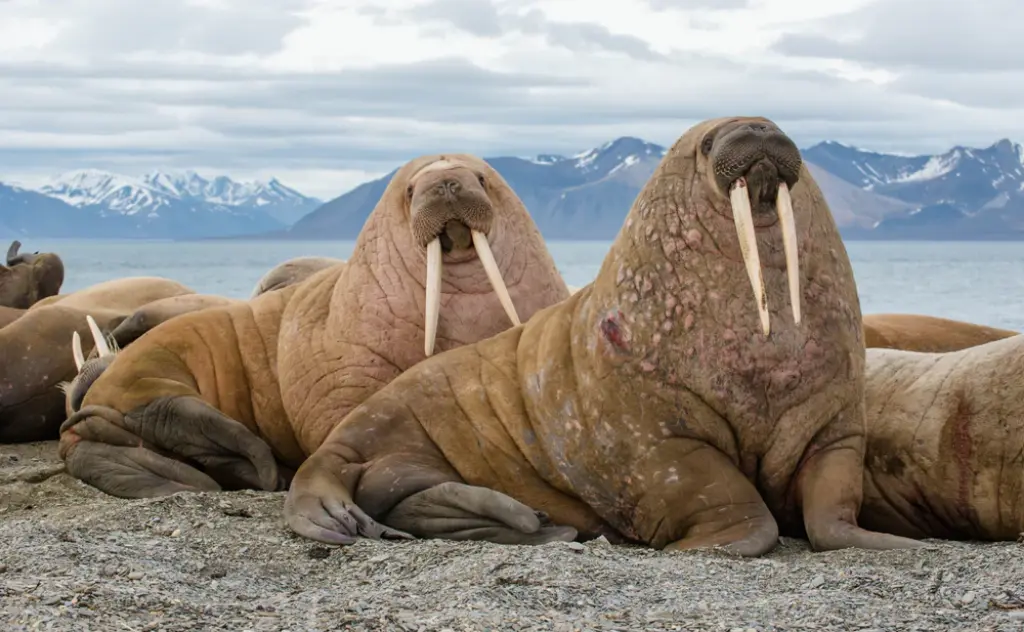
Anatomy and Physical Characteristics
Let’s dive deeper into what makes the walrus so unique physically. From their enormous size to their sensitive whiskers, they have many characteristics that set them apart.
Size and Weight: A True Giant
Walruses are truly massive animals. Adult males, also known as bulls, are significantly larger than females (cows). Bulls can weigh up to 4,400 pounds (2,000 kg) and reach lengths of 10 to 12 feet (3 to 3.6 meters). Females are smaller, typically weighing between 1,700 and 2,600 pounds (770 to 1,200 kg).
Tusks: More Than Just Decoration
The most recognizable feature of the walrus is its pair of long, ivory tusks. Both males and females have tusks, which are actually elongated canine teeth. Tusks serve multiple purposes:
- Defense: Walruses use their tusks to defend themselves against predators like polar bears and killer whales.
- Dominance: Males use their tusks in displays of dominance and fighting during the breeding season.
- Hauling Out: They also use their tusks to help them haul themselves out of the water onto ice or land. Think of them like ice picks.
Whiskers: Sensory Powerhouses
Walruses have a remarkable set of whiskers, called vibrissae, which are highly sensitive. These whiskers help them locate their prey in the murky waters of the Arctic seabed. They can detect subtle vibrations and changes in the water, allowing them to find clams, worms, and other invertebrates that they feed on. Think of them as underwater feelers.
Blubber: Staying Warm in a Frigid World
To survive in the icy Arctic waters, walruses have a thick layer of blubber, which is a type of fat that provides insulation and energy storage. This blubber layer can be up to 6 inches (15 cm) thick and helps keep them warm even in extremely cold temperatures. The blubber also provides buoyancy, helping them stay afloat in the water.
Walrus Behavior and Diet
Now, let’s see how these amazing creatures behave and what they eat.
What Do Walruses Eat? Bottom Feeders
Walruses are primarily bottom feeders, meaning they forage for food on the seabed. Their diet mainly consists of clams, but they also eat other invertebrates like worms, snails, crabs, and sea cucumbers. They may occasionally eat fish or seals, but this is less common.
To find their food, walruses use their sensitive whiskers to locate prey buried in the sediment. They then use their strong lips and suction to extract the meat from the shells. They can consume a significant amount of food each day, sometimes eating thousands of clams in a single feeding session.
Social Behavior: Living in Groups
Walruses are social animals and typically live in large groups called herds. These herds can consist of dozens or even hundreds of individuals. They gather on ice floes or beaches to rest, socialize, and breed. During the breeding season, males compete for dominance and mating opportunities. These competitions can be fierce, involving displays of size and tusk strength.
Reproduction and Life Cycle
Walruses have a relatively slow reproductive rate. Females typically give birth to a single calf every two to three years. The gestation period is about 15 to 16 months. Calves are born on the ice and remain with their mothers for several years, learning important survival skills.
Threats and Conservation Status
The existence of these amazing animals faces several challenges, and understanding the threats they face is crucial for their conservation.
Climate Change: A Major Threat
One of the biggest threats to walruses is climate change. As the Arctic warms, sea ice is melting at an alarming rate. Walruses rely on sea ice as a platform for resting, breeding, and accessing their food sources. The loss of sea ice forces them to haul out on land in large numbers, which can lead to overcrowding, stampedes, and increased stress.
Human Activity: Impacts on Walruses
Other human activities also pose threats to walruses. These include:
- Hunting: While hunting is regulated in many areas, it still occurs and can impact walrus populations.
- Oil and Gas Development: Exploration and development of oil and gas resources in the Arctic can disrupt walrus habitats and expose them to pollution.
- Shipping: Increased shipping traffic in the Arctic can disturb walruses and increase the risk of ship strikes.
Conservation Efforts
Fortunately, there are ongoing efforts to protect walruses and their habitats. These efforts include:
- Regulations: Implementing regulations to manage hunting and protect walrus habitats.
- Research: Conducting research to better understand walrus populations and their needs.
- Climate Action: Taking action to reduce greenhouse gas emissions and mitigate the impacts of climate change.
Fun Facts About Walruses
To finish off, here are some fun facts to remember about these fascinating creatures:
- Walruses can hold their breath for up to 5-10 minutes while diving for food.
- They can turn their hind flippers forward to walk on land.
- Walruses have a thick layer of blubber that can make up to 20% of their body weight.
- Their scientific name, Odobenus rosmarus, means “tooth-walking sea horse.”
Conclusion
The walrus is a truly remarkable animal that plays an important role in the Arctic ecosystem. Understanding their unique adaptations, behaviors, and the threats they face is essential for ensuring their survival in a changing world. By supporting conservation efforts and raising awareness about the importance of protecting their habitats, we can help these gentle giants thrive for generations to come. Remember, even small actions can have a big impact on protecting Odobenus rosmarus and the Arctic environment.

